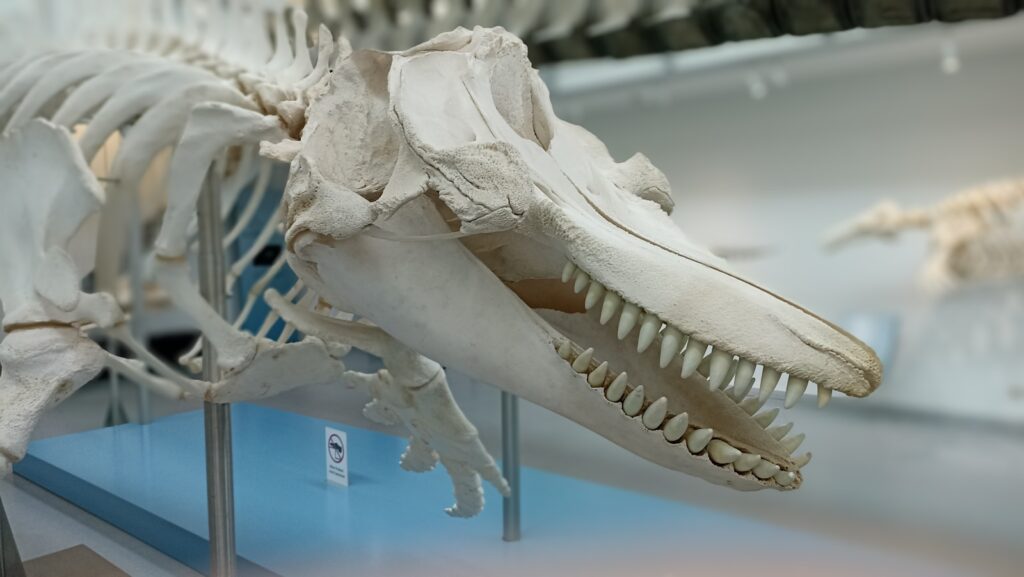For decades, dinosaurs have captivated our imagination through books, films, and museum exhibits. However, one medium has emerged as a particularly powerful force in shaping public perception of these prehistoric creatures: video games. From the earliest pixelated representations to today’s scientifically informed digital recreations, games have played a fascinating role in how we visualize, understand, and connect with dinosaurs. These interactive experiences don’t just entertain—they educate, inspire scientific curiosity, and sometimes challenge established paleontological knowledge. Let’s explore how the evolution of video games has transformed our relationship with dinosaurs and influenced our collective understanding of these magnificent, extinct animals.
The Early Pixel Predators: Dinosaurs in Classic Gaming

The earliest video game dinosaurs bore little resemblance to their real-life counterparts, constrained by the technological limitations of the 1980s and early 1990s. Games like “Saurian” for the Commodore 64 and “Dinosaur Discovery” for early PCs featured blocky, simplistic representations that were more symbolic than accurate. These primitive digital dinosaurs were typically portrayed as fearsome monsters rather than animals, often depicted in unnatural colors and with exaggerated features that reinforced popular misconceptions. Despite their inaccuracies, these games marked the beginning of interactive dinosaur experiences, allowing players to engage with prehistoric concepts in ways that static media couldn’t provide. The popularity of these early dinosaur games demonstrated the public’s fascination with these creatures and created a market for increasingly sophisticated prehistoric gaming experiences.
Jurassic Park: The Game-Changer for Digital Dinosaurs

The release of the film Jurassic Park in 1993 revolutionized not only how dinosaurs were portrayed in cinema but also video games. The movie’s groundbreaking special effects raised public expectations for dinosaur depictions across all media, including gaming. The Jurassic Park video game adaptations that followed marked a significant leap forward in digital dinosaur representation, with developers striving to match the film’s relatively scientifically-informed designs. These games introduced millions of players to concepts like pack-hunting Velociraptors and the imposing presence of Tyrannosaurus rex, cementing specific dinosaur behaviors and appearances in the public consciousness. Though still containing scientific inaccuracies, these games represented a watershed moment when video game dinosaurs began to be treated less as generic monsters and more as reconstructions of actual prehistoric animals. The commercial success of these titles demonstrated that scientifically-influenced dinosaur designs could be both entertaining and marketable.
Educational Evolution: Dinosaur Games as Learning Tools

By the late 1990s and early 2000s, educational dinosaur games emerged as powerful learning tools for young players. Titles like “DK’s Ultimate Dinosaur” and “Dinosaur Adventure 3D” combined gameplay with factual information, creating immersive environments where children could absorb paleontological concepts while having fun. These games often included encyclopedia sections with measurements, diet information, and habitat details based on the scientific understanding of the time. Museum institutions began recognizing the educational potential of video games, with some developing their own interactive experiences to complement traditional exhibits. The effectiveness of these games in teaching complex scientific concepts to young audiences has been documented in educational research, with studies showing improved retention of dinosaur facts compared to traditional teaching methods. Interactive elements allowed players to explore paleontological concepts like fossil formation, excavation techniques, and evolutionary relationships in ways that textbooks simply couldn’t match.
Accuracy vs. Entertainment: The Scientific Tug-of-War

Game developers have long struggled with balancing scientific accuracy against entertainment value when designing dinosaur games. Commercial pressures often push developers toward more dramatic, fearsome dinosaur depictions that may reinforce outdated stereotypes rather than reflect current scientific understanding. This tension became particularly evident in games based on popular franchises like Jurassic Park, where scientific accuracy was frequently sacrificed for familiar designs that matched audience expectations. Some games deliberately take creative liberties, featuring dinosaurs with fictional abilities or in historical periods where they never existed, potentially reinforcing misconceptions about dinosaur timelines and capabilities. The commercial success of scientifically inaccurate games has occasionally frustrated paleontologists who worry about their impact on public understanding. However, this tension has also created interesting discussions among players about what constitutes “acceptable” artistic license versus harmful misinformation, leading to greater scientific literacy among gaming communities over time.
Dinosaur Simulation Games: Living the Prehistoric Life

Simulation games represent one of the most influential gaming genres for dinosaur perception, allowing players to step into the scales of prehistoric creatures. Titles like “Saurian” and “The Isle” aim to recreate prehistoric ecosystems where players experience life as various dinosaur species, hunting, socializing, and surviving in scientifically-informed environments. These simulations often incorporate cutting-edge paleontological research into their game mechanics, with dinosaur capabilities and limitations based on fossil evidence and biomechanical studies. Players must adapt to the biological constraints of their chosen species, learning about concepts like endothermy versus ectothermy, predator-prey relationships, and even mating behaviors through gameplay rather than explicit instruction. The immersive nature of these games creates powerful emotional connections to extinct animals, with many players reporting increased interest in formal paleontological education after experiencing life as a digital dinosaur. Community discussions around these simulations often feature sophisticated debates about scientific accuracy, demonstrating how these games inspire deeper engagement with paleontological concepts.
Feathered Revolution: Games Embracing Modern Dinosaur Science

One of the most significant scientific revolutions in paleontology—the discovery that many dinosaurs possessed feathers—has been gradually reflected in video games, though not without resistance. Early game developers largely ignored these findings, continuing to depict dinosaurs with scaly, reptilian skin long after scientific evidence indicated otherwise. This changed with titles like “Saurian” and “Prehistoric Kingdom,” which proudly featured scientifically accurate feathered dinosaurs, particularly theropods related to modern birds. These games helped normalize feathered dinosaur depictions for younger players, who grew up accepting this representation as standard rather than controversial. The visual impact of seeing a feathered Velociraptor or Tyrannosaurus in an interactive environment has proven particularly effective at updating mental images of these iconic dinosaurs. Community feedback on these games reveals fascinating generational divides, with younger players often preferring scientifically accurate feathered models while older players sometimes resist changes to the dinosaur images they grew up with.
Indie Games: Incubators of Paleontological Innovation

Independent game developers have emerged as unexpected champions of scientific accuracy in dinosaur games, often surpassing major studios in their commitment to up-to-date paleontological knowledge. Free from the commercial pressures facing larger companies, indie developers can prioritize scientific fidelity even when it challenges popular dinosaur stereotypes. Games like “Saurian” began as passion projects by dinosaur enthusiasts determined to create the most scientifically accurate prehistoric experience possible, consulting directly with paleontologists during development. These smaller studios often maintain active relationships with the scientific community, rapidly updating their dinosaur designs when new research emerges. The direct communication between indie developers and their communities creates feedback loops where scientifically-minded players can influence development, suggesting corrections or improvements based on current research. This collaborative approach has resulted in some indie games becoming respected within paleontological circles as legitimate educational tools, blurring the line between entertainment and scientific communication.
Open Worlds and Ecosystem Thinking

Open-world dinosaur games have revolutionized the public understanding of prehistoric animals by placing them within complex ecological systems rather than as isolated specimens. Games like “ARK: Survival Evolved” and “Prehistoric Kingdom” present dinosaurs as components of broader ecosystems, interacting with diverse flora and fauna in environmentally realistic settings. This ecological framework helps players understand dinosaurs as animals that adapted to specific environmental niches rather than generic monsters, illuminating concepts like habitat preference, resource competition, and ecological succession. The day/night cycles and seasonal changes in these games illustrate how dinosaurs might have adapted to changing environmental conditions, a concept difficult to convey through static museum displays. By managing dinosaur populations in game ecosystems, players gain an intuitive understanding of trophic cascades and food web relationships, experiencing firsthand how the introduction or removal of species affects entire prehistoric environments. This systems-thinking approach represents one of gaming’s most significant contributions to dinosaur education, helping players develop a more holistic understanding of prehistoric life.
Paleontology as Gameplay: Fossil Hunting Mechanics

Several notable games have transformed the scientific processes of paleontology into engaging gameplay mechanics, giving players hands-on experience with fossil discovery and analysis. Titles like “Dinosaur Fossil Hunter” and “Prehistoric Kingdom” include detailed fossil excavation systems where players must carefully uncover, preserve, and reconstruct dinosaur remains. These mechanics accurately represent the meticulous nature of paleontological fieldwork, teaching players about stratigraphy, fossil preparation, and the patience required for proper scientific collection. The process of reconstructing complete skeletons from fragmentary remains in these games illustrates the detective work involved in paleontology, where scientists must make educated inferences based on incomplete evidence. Some games include analysis mechanics where players use comparative anatomy to identify newly discovered species, reinforcing understanding of evolutionary relationships and anatomical terminology. By gamifying actual scientific methodologies, these titles have inspired a new generation of potential paleontologists while giving casual players an appreciation for the rigorous processes behind dinosaur discoveries.
User-Generated Content: Players as Paleoartists

The rise of games with robust modding capabilities and creation tools has empowered players to become paleoartists in their own right, contributing to evolving dinosaur representations. Games like Minecraft,” pore, and “o Man’s Sky” feature active communities of creators designing increasingly sophisticated dinosaur models based on current scientific understanding. These user-generated creations often reflect paleontological debates more quickly than official game content, with enthusiastic modders rapidly updating their dinosaur designs when new research emerges. Community platforms around these games feature fascinating discussions about anatomical accuracy, with players sharing reference materials and critiquing each other’s work based on scientific principles. The accessibility of these creation tools allows paleontology enthusiasts without formal art training to participate in paleoart, democratizing a field once limited to professional illustrators. Perhaps most significantly, this creator culture encourages players to research current paleontological literature to inform their designs, fostering scientific literacy and critical engagement with primary sources.
Virtual Reality: Embodied Dinosaur Encounters

Virtual reality dinosaur experiences represent the cutting edge of immersive prehistoric education, allowing players to phyinteract physicallyth life-sized digital dinosaurs in unprecedented ways. Applications like Jurassic World Alive VR and Time Machine VR create powerful presence effects where players physically respond to dinosaur encounters with authentic emotional reactions, from wonder to fear. The spatial understanding gained through VR experiences helps players grasp the true scale of different dinosaur species more effectively than any previous medium, correcting common misconceptions about dinosaur sizes. Some VR applications incorporate haptic feedback to simulate physical interactions with prehistoric environments, allowing users to feel the texture of dinosaur skin or the resistance of prehistoric vegetation. Research into educational VR suggests these embodied experiences create stronger memory formation and concept retention than traditional learning methods, making them particularly effective for dinosaur education. For individuals without access to major natural history museums, VR dinosaur encounters democratize access to immersive prehistoric experiences that were previously unavailable outside major metropolitan areas.
Scientific Consultants: Paleontologists Enter the Game

A growing trend in dinosaur game development involves direct collaboration with professional paleontologists, lending scientific credibility to digital representations. Games like Jurassic World Evolution 2 and Saurian prominently advertise their paleontological consultants, using this scientific involvement as a marketing feature that appeals to accuracy-minded players. These collaborations benefit both parties, with games gaining scientific legitimacy while paleontologists receive platforms to communicate their research to audiences far larger than those reached through academic publications. The involvement of scientists has noticeably improved anatomical accuracy in recent games, particularly in skeletal proportions, muscle attachments, and range of motion limitations. Some paleontologists have embraced game development as a legitimate form of science communication, recognizing the medium’s unique ability to visualize hypothetical scenarios that cannot be tested in traditional research. This trend represents a significant shift from earlier decades when most scientists dismissed video games as trivial entertainment, signaling growing recognition of gaming’s educational potential within the scientific community.
The Future: AI-Generated Dinosaurs and Evolving Understanding

Emerging technologies promise to further revolutionize how video games shape our understanding of dinosaurs in coming years. Machine learning algorithms trained on paleontological datasets are already being used to generate scientifically plausible dinosaur behaviors in simulation games, creating more realistic interactions than hand-coded animations could achieve. Procedural generation technologies allow for the creation of speculative dinosaur species based on evolutionary principles, helping players understand morphological constraints and adaptive radiation concepts. Some developers are experimenting with dynamic update systems that would automatically revise in-game dinosaur models when new paleontological research is published, ensuring games remain scientifically current throughout their lifespan. The increasing computational power available to game developers enables more sophisticated biomechanical simulations, with some upcoming titles featuring dinosaur movements based on detailed musculoskeletal models and physics calculations. As these technologies mature, the line between educational simulation and scientific visualization tools continues to blur, with some paleontologists already using game engines to test locomotion hypotheses and behavioral scenarios.
Conclusion

Video games have evolved from offering simplistic, monster-like representations of dinosaurs to becoming sophisticated platforms for paleontological education and scientific visualization. Through their interactive nature, games have accomplished something unique: they’ve transformed passive dinosaur enthusiasts into active participants in prehistoric worlds. This engagement has fostered a deeper understanding of dinosaurs as biological organisms within complex ecosystems rather than isolated movie monsters. While tensions between scientific accuracy and entertainment value persist, the overall trend shows games increasingly embracing current paleontological knowledge. As technology continues advancing and collaboration between developers and scientists strengthens, video games will likely play an even more significant role in shaping how future generations understand, visualize, and connect with Earth’s magnificent prehistoric inhabitants.




